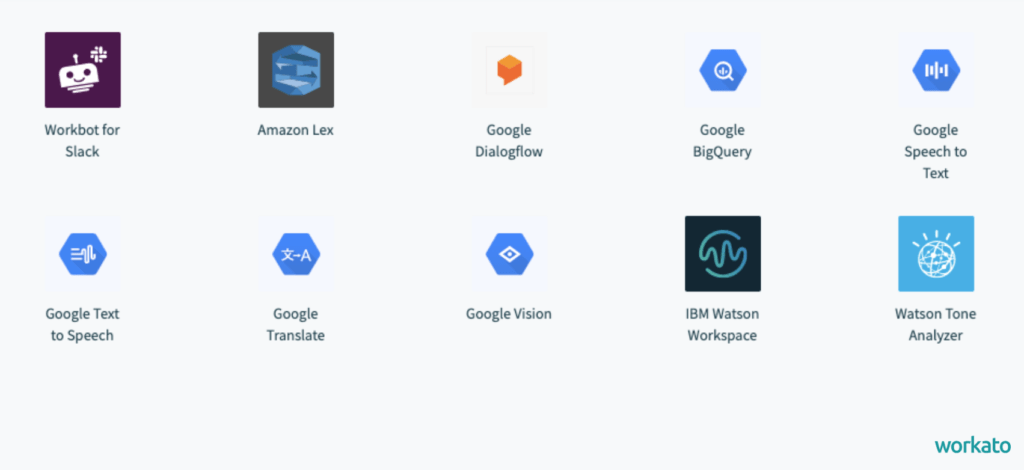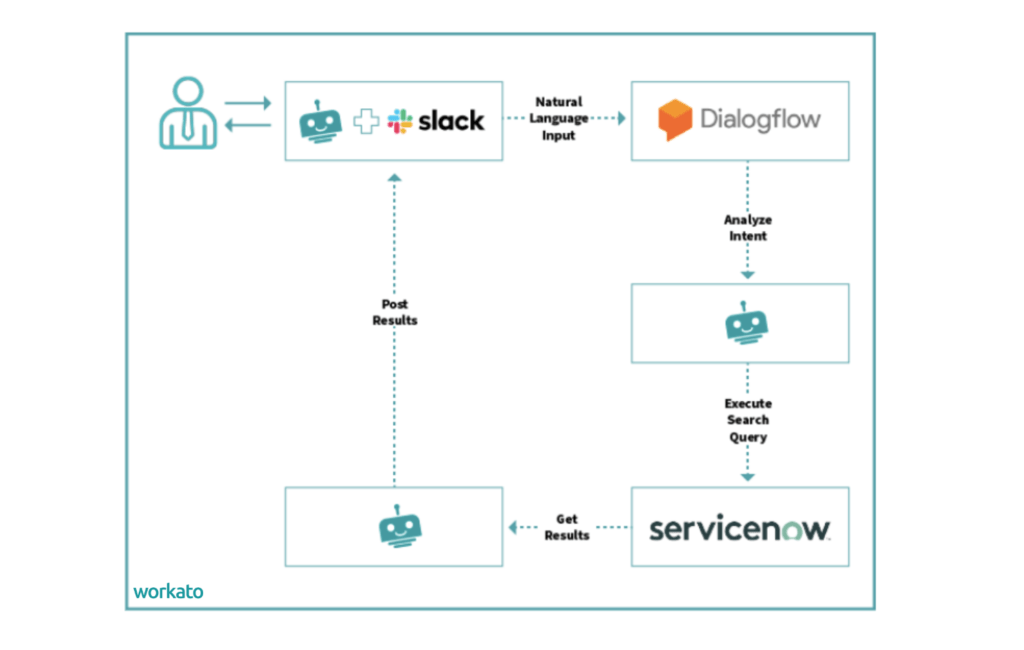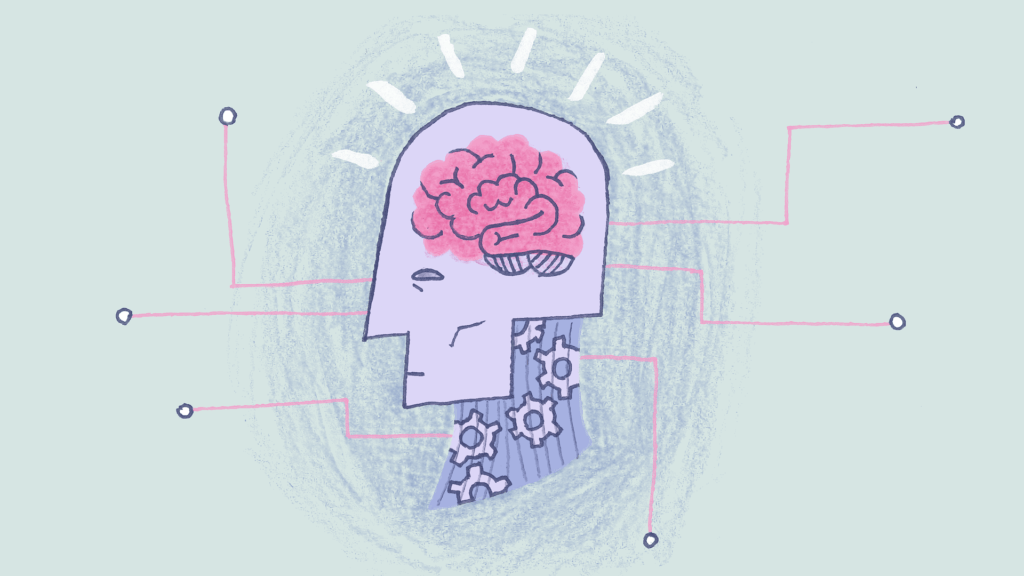There are a wide range of automation tools on the market today. The word ‘automation’ paints a vast swath of meaning, ranging from physically powerful automations like automated factory machines that assemble cars, to incredibly simple administrative automations like short programs that send emails, to the hilarious yet terrifying garden carnivore, SlugBot.

Intelligent automation is automation that’s enabled with AI tools, machine learning capabilities, or bots. Some of the AI tools that can be used to enable intelligent automation are IBM’s Watson, Salesforce Einstein, and Google Cloud Vision. Platforms that enable workflows that utilize these AI tools are called Intelligent Automation Platforms, Intelligent iPaaS, or Enterprise Automation Platforms. Each comes with its own capabilities and limitations.
>> Check out our free ebook, Intelligent Automation: A Primer
From Robotic Process Automation to Intelligent Automation
Intelligent automation is distinct from Robotic Process Automation, or RPA. Robotic Process Automation was pioneered in the early 2000s by Blue Prism. Blue Prism launched their first commercially available product, a tool called Automate, in 2003. In 2019, Blue Prism is offering “connected RPA”, which is RPA with AI and cognitive features built in, and enhanced functionality and extensions. So how is AI-enabled RPA different than intelligent automation?
RPA does not operate well under changing conditions such as a different interface, data type, or integration requirements. It operates rigidly within its established process, and if conditions change, it’s prone to breaking. Generally, a business user cannot create, deploy, and maintain automations using RPA.
For more information, check out Jason Bloomberg’s report on the limitations of RPA >>
Cloud-based intelligent automation is distinct from RPA technology. The integrations are comprised of a series of cloud-based API connectors that can perform CRUD actions and read / react to event triggers to create data corridors between disparate applications, using artificial intelligence and machine learning to enhance the power of the workflows. The cloud-based intelligent automation framework is based on business logic (trigger-events) that determine when, and if, actions in a sequence take place between applications.
An enterprise automation platform has the advantages of flexibility and agility over RPA, because it’s so easy to create and modify integrations and applications with the platform, that non-engineers can create and maintain the automations. This makes it easier for teams to launch and modify automations without relying on the engineering team.
Related: A study on the automations that enterprise organizations plan to build
Making Automation “Intelligent”
Let’s look at an example of an automation that uses bots and AI.

Users can make natural language requests to a bot in Slack, say Workbot, which are recognized via a natural language processing tool like Dialogflow to analyze the intent of the input. Then, the bot will search ServiceNow’s knowledge base to retrieve the best answers to the question asked and post the results back in Slack. This process feels very natural to the employee and eliminates the need to speak with a Subject Matter Expert every time someone has a question.
Building Intelligent Automations
There are many tools that claim to enable Intelligent Automation, but most require integration specialists and have long deployment times. Only one type of platform works seamlessly with AI tools and has built-in bot framework, an Enterprise Automation Platform. Workato’s Enterprise Automation Platform is twofold: It provides a strong iPaaS foundation, to enable part two: intelligent business process automation. Enterprise automation can be updated and adjusted by business users such as Business Systems Analysts and app admins Field mapping between applications is assisted by Workato’s Recipe IQ, a tool that uses machine learning to analyze the recipes that have been added to our online recipe (automation) library to recognize integration patterns and make suggestions during the development process.
Related: 3 AI workflow automation examples
Strategizing Intelligent Automations: Data Mapping and Business Processes Design
Automation begins with data mapping and the digital abstraction of tangible processes. This is a process that we’re so familiar with in everyday life that we’re hardly aware of it. Any time you swipe your credit card, you’re using an abstract representation of a range of material transactions to acquire a service or good. Likewise, business processes are abstracted, often into data sets stored in SaaS applications and databases. For example, your customer relationships may be stored as a series of quantifiable interactions with outcomes, in the form of a data set, that determines your customer’s segment.
Processes have become increasingly abstracted, as companies have implemented ever-greater usage of business data to quantify and strategize. Having this framework in mind can help businesses analyze ways to bring their current strategies to successful digital iterations without losses in quality of service, especially in instances such as automated marketing or customer support.
Hewlett-Packard pioneered the process of aligning business and IT processes using a Business Alignment Framework, which offered them a range of benefits, including:
- The “optimization of all the business processes with the support of integrated technology, as opposed to the suboptimization of individual processes and organization units with the support of fragmented technology.”
- A “consistent focus on processes that maximize stakeholder value.”
- “Common understanding of issues and future targets throughout the organization”
- “High level of transparency and flexibility to act and react to changes stemming from the competitive environment as well as improvements in technology”
- “High level of commitment from people throughout the organization.”
– Judith Myer, Enterprise Application Integration (Best Practices), page 13
HP’s business alignment framework (at this point, a historic document), illustrates the inextricable co-volition of business processes, business alignment, and enabling technologies.
Once processes are strategically optimized and mapped onto a business’ IT systems as data, organizations can automate facets of the enterprise individually, using specialized recipes, such as recipes for quote-to-cash, HR hire-to-retire, account syncing, etc. This can be transformative for productivity along lines of business, net revenue, and customer experience.
From Integration to Automation
The beauty of iPaaS and intelligent automation is that companies can expand a flexible framework of connectors and trigger events that can blossom into fully automated workflows. It takes businesses beyond the paradigm of point-to-point integration. Although integration is a powerful concept that has brought about many changes in industry, it is only the tip of the iceberg. Multi-application automations allow one application to auto-trigger an action in another that auto-triggers an action in another.
If integration is the fascia that unites the disparate corpus of business applications and processes, the muscle between the bones, intelligent automation is the electricity that ennervates the system and makes dynamic action possible with minimal external manipulation.
Workato enables companies to implement enterprise-wide automation, without worrying about uncertain costs for different automation projects. Workato founder, Vijay Tella, notes, “We strongly believe that unlocking and accelerating digital transformation at scale within companies and across the industry will drive huge success for all.” We envision this model making it possible for companies to take a holistic approach to digital transformation and think big for the future.
To see how you can implement intelligent automation and the Workato platform, request a demo from our team.
